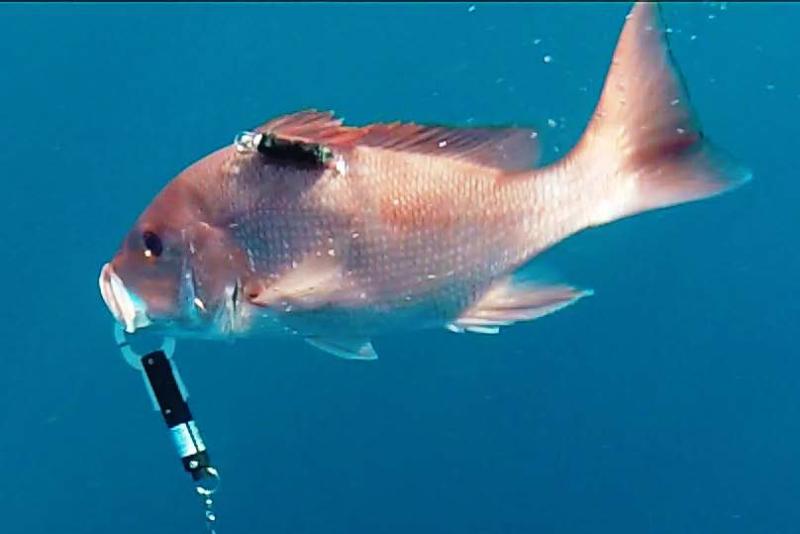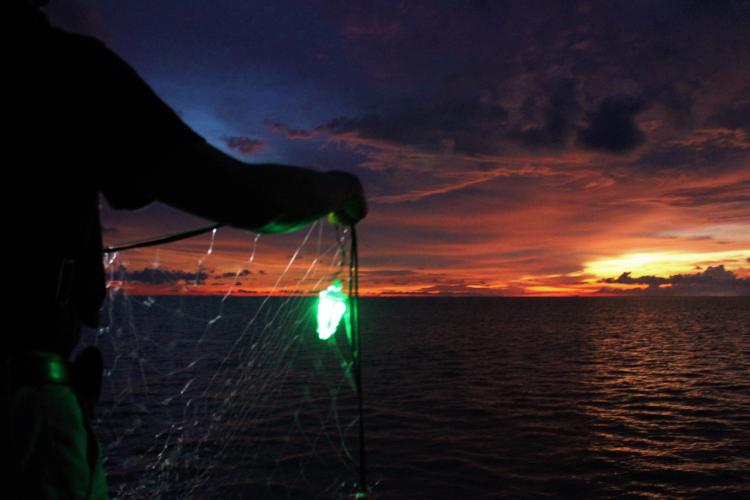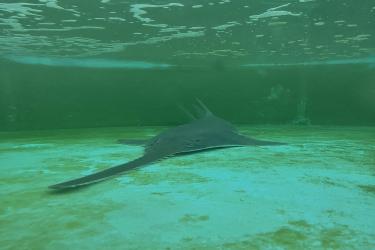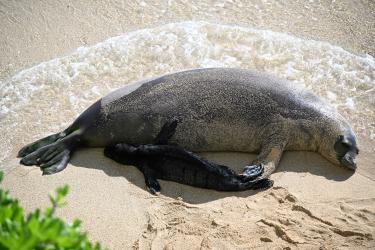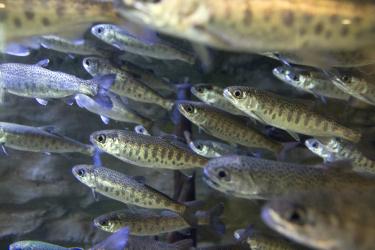Join us for Bycatch Reduction Week, August 22–26, 2022, as we focus on the development, testing, and adoption of gears that reduce bycatch in U.S. fisheries. Bycatch can be fish, marine mammals, sea turtles, and seabirds that become hooked or entangled in fishing gear, and that fishermen do not want, cannot sell, or are not allowed to keep.
NOAA Fisheries is committed to minimizing bycatch in U.S. fisheries to ensure our fisheries are sustainable and protected species are given the best chance to recover. We use science and technology to develop innovative solutions to help reduce bycatch in commercial fisheries. Along with the fishing industry and other partners, we accurately monitor and estimate bycatch and research and develop tools to reduce bycatch of non-target fish.
To reduce bycatch, NOAA Fisheries invests in technological innovations that make fishing gear more selective and that helps fishermen target the fish they can and want to sell. We also invest in technology that increases the chance of survival for animals caught alive that are released. Explore the features below to learn more about our bycatch reduction efforts.
Bycatch Reduction Features
Podcast: Reducing Bycatch Through Innovation
On this episode of Dive In with NOAA Fisheries, we discuss bycatch reduction efforts through the lens of innovation rather than just more regulations. Preventing bycatch entirely may be impossible, but it can be managed, accounted for, and at least mitigated through innovative approaches. Hear how NOAA is working to reduce bycatch across the country.
Listen to the podcast on reducing bycatch through innovation
Designing Excluder Devices to Reduce Juvenile Sea Turtle Bycatch
A project to develop a new type of turtle excluder device (TED) in collaboration with the Gulf of Mexico shrimp fishery recently wrapped up its first round of prototype testing, and early results show promise to dramatically reduce the number of small turtles caught in shrimp trawl nets.
Working with shrimp fishers to reduce juvenile turtle bycatch in the Gulf
Meet Jeff Gearhart, Gear and Vessel Support Branch Chief
As the Chief of the Gear and Vessel Support Branch at the Southeast Fisheries Science Center, Jeff Gearhart supports surveys and research through readiness and operation of our small research vessels the R/V Southern Journey and R/V Caretta and construction of sampling gear and support equipment. He contributes to agency research and development of fishing gear and fisheries-related components that reduce bycatch and bycatch mortality of incidentally captured fish and protected species. He also provides expert consultations on fishing gear and fisheries techniques as they relate to fisheries bycatch for both domestic and international fisheries.
Learn more about Jeff Gearhart and his work
Reducing Bycatch Through Decades of Research and Innovation
NOAA researchers are recognized internationally for their expertise in reducing sea turtle bycatch using real time Turtle Excluder Device testing.
Reducing bycatch through decades of research and innovation
New Rule Focuses on Improving Survival of Hooked Oceanic Whitetip Sharks
NOAA is prohibiting wire leaders in the Hawaiʻi deep-set longline fishery. The measure is estimated to increase the survival of threatened oceanic whitetips by more than 30 percent.
New rule focuses on improving survival of hooked oceanic whitetip sharks
Approval of Selective Gear for Small-mesh Fisheries: The Large-mesh Belly Panel
We approved a new selective trawl gear, the large-mesh belly panel, for use in small-mesh fisheries when the fisheries accountability measure for Georges Bank yellowtail flounder is triggered. Use of the large-mesh belly panel reduces bycatch of groundfish species of concern, such as yellowtail flounder.
Approval of selective gear for small-mesh fisheries
Lights, Camera, Bycatch–LEDs Light the Way for Chinook Salmon
The development of efficient, cost-effective light-emitting diode technology has led to a growing list of innovative residential and industrial applications.
LEDs light the way for chinook salmon
NOAA Releases 85 Florida Loggerhead Sea Turtles into the Wild
Juvenile sea turtles returned to the wild after study to reduce bycatch.
Podcast: Exploring Solutions for Sea Turtle Bycatch
In this episode of Dive In with NOAA Fisheries, we talk with Barbara Schroeder, National Sea Turtle Coordinator, and discuss bycatch innovations that are helping sea turtles thrive and how we work with fishermen to reduce bycatch.
Listen to the podcast on solutions for sea turtle bycatch
Meet Canh Nguyen, Fisheries Methods and Equipment Specialist
Canh Nguyen is a Fisheries Methods and Equipment Specialist and Gear Monitoring Team Leader at the Southeast Fisheries Science Center. Canh has a long history with turtle excluder devices in the shrimp fishery. He provides outreach about TEDs to the shrimping community—in English and Vietnamese.
Learn more about Canh Nguyen and his work
Illuminated Nets Could Provide A Brighter Future For Sea Turtles
Illuminated gillnets are helping reduce bycatch of protected species like sea turtles.
Learn how illuminated nets help reduce bycatch of protected species
Modifying Fishing Gear Reduces Shark Bycatch in the Pacific
Using monofilament leaders instead of wire leaders reduced bycatch by roughly 40 percent.
Modifying fishing gear reduces shark bycatch in the Pacific
Third Year of NOAA's Tuna and Swordfish Restoration Project in the Gulf of Mexico Begins
Effort aims to restore oceanic, highly migratory fish from impacts of the Deepwater Horizon oil spill by partnering with fishermen on a voluntary 6-month break from pelagic longline fishing. Participants also have options to use alternative gear that reduces bycatch.
NOAA's Tuna and Swordfish Restoration Project in the Gulf of Mexico
NOAA and Partners Are Helping Restore Tuna and Swordfish in the Gulf after Deepwater Horizon
A small group of pelagic longline fishing vessel owners will take a 6-month voluntary repose, can continue to fish with alternative gear, improving populations and supporting supply chains.
Helping to restore tuna and swordfish in the Gulf after Deepwater Horizon
